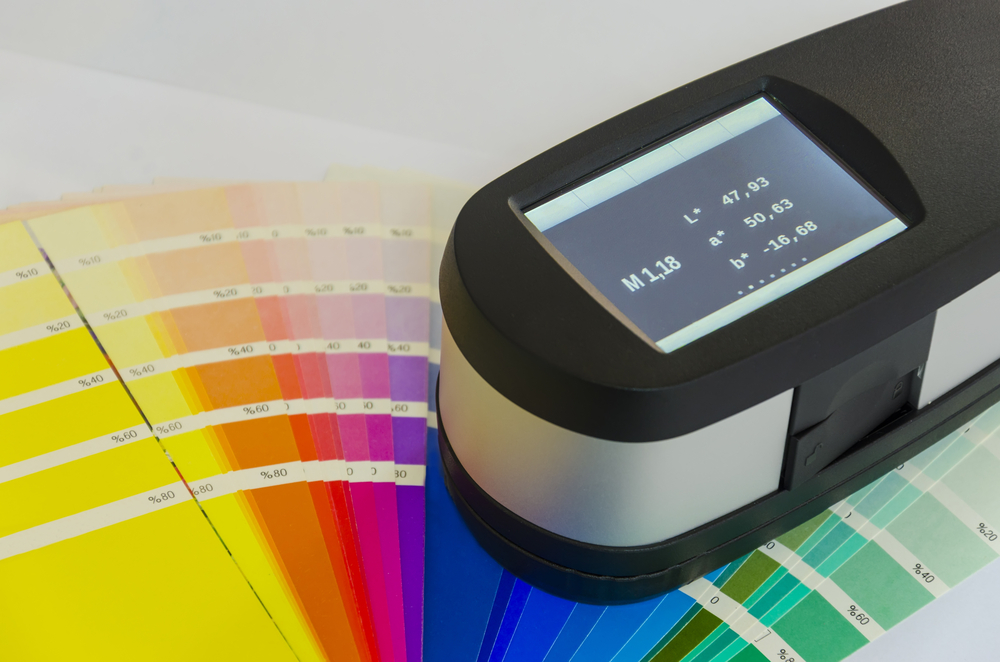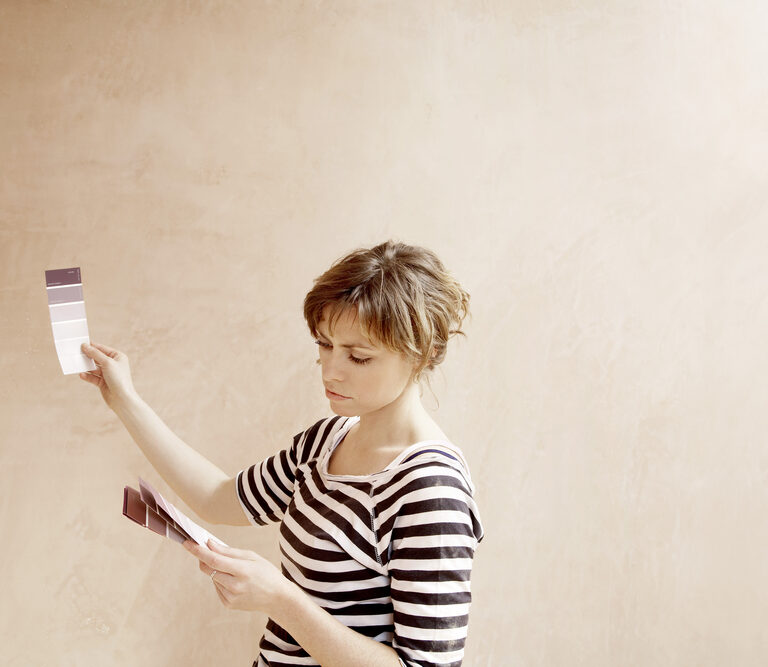Painting a room is one of the easier projects to DIY since it doesn’t require any specialized training. It’s even easier if you intend on painting the walls an entirely different color. What’s not easy is matching the current color of the walls if you don’t already know the color name.
But don’t worry if you’re plagued by this problem. Here, you’ll learn how to match paint in a variety of ways, and how to do each method efficiently so you don’t only get it right, but also get it done fast.
Determining the Right Color
Half of learning how to match paint is learning how to figure out what color a surface is. Usually, when we need to ascertain what color something is, we just eyeball it. However, that’s not good enough when you’re trying to match paint.
Find the Can
The easiest way to determine the color of the paint you’re trying to match is by taking the original can of paint to your local paint store. If the previous owners were the ones who did the last paint job, you might be able to find the can in the garage or the basement.
The paint store should be able to get a match if you have the paint name or code. Otherwise, there are a couple of things they can do to match the paint. They could apply the paint on a piece of drywall and figure out the color using specialized tools. Or, if it was you who bought the paint yourself, they could pull the information from your account if you have one with them.
Without the Can
If you can’t find the can, don’t fret. There are at least five other ways to figure it out. Before you try these methods, however, you need to clean the surface you need to match. Unless you live in an immaculate home (which is unlikely), there’s bound to be an accumulation of dirt and dust that’s distorting the surface’s real color.
To clean the surface, dust it first using a piece of cloth, then wipe it down using a soft, damp, soapy sponge. Don’t use a colored soap or a dyed sponge since it can stain the surface instead of cleaning it. Let it dry before you try any of the methods below.
Take Some Photos
Showing photos of the painted surface to the people working at the paint store is one of the faster ways to match paint. But it’s also the least reliable next to eyeballing. Phone cameras usually can’t accurately capture the colors of the subject. However, if you’re not looking for an exact match, this technique might work for you.
If you need an exact match, you can improve your chances of success by taking the photos in natural lighting, particularly by where the light comes in. Turn the lights on if the room doesn’t get that much natural light. Note that with fluorescent lights, the surface will look cooler or more blue, while with incandescent lights, it will look warmer or more yellow. One trick you could try to fix the color balance is holding a white piece of paper next to the area you want to snap.
You’re also going to want to take photos at different times since lighting changes throughout the day. The color of your wall at 12:00 p.m. isn’t going to look the same once it’s dark out.
Try Paint Matching Apps
Sometimes, merely taking photos of the painted surface won’t be good enough, so you’ll need to take a step further with your phone. This is where paint matching apps come in.
There’s a lot of different apps you can download and test out, and popular paint companies often have their own paint matching app as well, such as Sherwin-Williams’ ColorSnap® Visualizer, Behr’s ColorSmart, Glidden’s Procrastipainted, and Benjamin Moore’s Color Portfolio. Home Depot also has its very own Project Color.
These apps typically have multiple features, with their paint matching feature almost always working in similar ways. You’ll either have to take a photo of the painted surface, or pick an existing photo from your library. The app will then analyze the color and present you with the closest matches. Remember to follow the tips above on how to take photos of the painted surface so you capture the color more accurately.
If you’re going to use a paint company’s app, know that you’ll only get matching colors that are in their library or palette. If you know the brand of paint that was used, use that brand’s paint matching app. If you don’t, you’re just going to have to keep trying out different apps until you find the color you’re looking for.
Bring Some Paint Chips Home
If, after you’ve taken your photos to the paint store—or gotten a color code or name from an app—you still don’t find a match, you could always take a selection of paint chips home. Tape them to the wall and observe how they look against the surface throughout the day.
Buy a Color Sensor
When you go to a paint store to try and match paint, the technician doesn’t simply eyeball the color and come up with potential matches. Instead, he uses a spectrophotometer to get more accurate results, although it’s only really accurate 90% of the time.

Using a spectrophotometer is definitely the way to go when matching paint, but this device is incredibly expensive and not something the regular DIYer can just buy. Fortunately, there now exist color sensors, which are less expensive, handheld devices that can analyze colors. Among the most popular color sensors are Color Muse and Nix Mini.
You use a color sensor by pressing it against the painted surface. It analyzes the color, then sends the reading to your phone which you can access using the brand’s app. Make sure Bluetooth works on your phone before you order a color sensor since that’s how the reading is sent.
Do the Thread Technique
If you’re more into doing things the old-fashioned way, or simply don’t like using mobile apps in general, you might like the thread technique better. Basically, you take various spools of thread, hold each of them next to the painted surface, and figure out which ones are the closest match.
This can actually be a more reliable way to match paint since you don’t have to deal with a phone camera’s inability to capture colors correctly. Once you have a match, take the spool of thread to the store.
Get a Sample
If none of the above methods work, your last resort is collecting your own sample. You can do this by peeling off the top layer of paint using a utility knife. You only need a one-inch square sample, preferably from a low-visibility area like behind a nightstand or under a window frame.
Make sure you’re not pressing the blade too hard into the wall, otherwise it will require more effort to patch it. Once you’ve taken your sample, place it in an envelope or small resealable storage bag to prevent it from getting stained, then take it to the store. Don’t forget to patch the spot where you took the sample.
Testing the Paint
Learning how to match paint doesn’t end with you finding the closest match. There’s still a chance it’s not the right color, so don’t get tempted to buy a large can of paint. Instead, get the smallest can and test the paint on a low-visibility surface. You might also want to get small cans of black and white paint so you can achieve a darker or lighter color when you need to.
Before you start, clean the surface you want to paint as well as the surrounding area. Paint a small swatch on the surface then let it dry. Waiting for paint to dry is definitely not easy, especially since it can take one to eight hours depending on the type of paint, but you have to wait no matter what since wet paint typically changes color once it dries.
You can’t make a final decision right away once the paint dries either. You still need to examine it at different times of the day for the next few days. The color can look different depending on whether it’s sunny, overcast, or raining.
If, after observing the new paint for a few days, you’ve established that the hue is brighter or darker, do the whole test again. This time, however, you add as many drops of white or dark paint as you need to achieve the right color.
Final Thoughts
Matching paint isn’t a quick process, and may take several trips to the paint store. As long as you follow the tips above, however, and don’t rush deciding on a shade, you should be able to find the closest match, if not the right match.
Pretty soon you’ll have freshly-painted walls in the same color. Just remember to clean the walls before you start painting so the new paint can better adhere to the walls.
